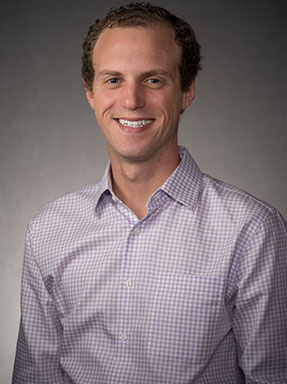Innovation Floor, Maker Space Offer Chance for All to Create
Behind the hum of the 3-D printers, obscured by students and their computer monitors, sits Austin Armstrong’s little herb garden.
Alongside the parsley and rosemary, technology sprouts. Tiny sensors monitor the temperature, soil moisture and humidity. With the data collected, Armstrong and co-founder Isaiah Silva think their Atomata company can help cannabis growers identify inefficiencies and increase their yield.
It’s not a homework assignment or a class project. Rather, it’s a passion project, born at the Innovation Floor Maker Space in DU’s new engineering and computer science building, where Armstrong found the tools and connections to bring an idea to life.
“I think I’d have a radically different life right now if this place wasn’t here,” says Armstrong, who studies chemistry and computer science. “If you’re in here doing something, it’s because you want to make something. Creativity and energy are definitely contagious.”
Since the building opened in fall 2016, the Innovation Floor has become the feature attraction: a playground of trial and error, where users are free to fail as they build out their ideas. There are 3-D printers, stations for building electronics and collaborative work areas. A newly opened woodshop in the nearby Metallurgy Building has only expanded the possibilities. The only prerequisites for use are training and desire.
"Everybody is a maker at heart,” says Michael Caston, executive director of the Innovation Floor. “Everybody likes to create and add value. That’s the core of what this space is about: being able to improve things and make the world a better place.”
For inspiration, the space hosts a weekly Maker Club, where all are welcome to come and create, regardless of their academic background.
“It really comes down to the community aspect,” says Jacob Goldman, who, with Armstrong, is the club’s co-president. “We’re all beginners to some degree. We understand what it means to be uncomfortable with this stuff.”
Faculty members also are becoming more comfortable. Take Bonnie Clark, an anthropology professor who now incorporates the Maker Space into her courses.
“With the revolution in 3-D scanning, we’re able to collect this amazing information about objects and places that would have been very difficult to do before,” she says.
Last spring, students used 3-D printers and scanners to replicate ancient artifacts. The models provided a unique opportunity to handle items typically seen only in photographs.
“They’re not going to get to use a 150-year-old headrest; it’s at the British National Museum,” Clark says. “With replica objects you get to have this immediate embodied experience. It’s things you just can’t [normally] do because the objects are rare or ancient or fragile.”
Other “nontraditional” disciplines are getting creative, too. The theater department, for example, creates set pieces in the woodshop. Biochemistry classes print models of the proteins they study. A professor in the art school found a way to reproduce alchemy stones that accompany a book that’s no longer in print.
For Heather Tobin, a staff member in DU’s Office of Teaching and Learning, the capabilities of the emerging technology are stunning. And so is the change in culture that the space promotes.
“There’s a maker movement of people being able to come together on projects in a cross-disciplinary fashion,” Tobin says. “We learn more from each other than we do by ourselves.”
Tobin is working with faculty members to develop new teaching strategies that incorporate the Maker Space and its culture into curricula. She can already see cross-campus barriers breaking down.
“Anyone in the community has access to it and is overtly invited,” she says. “There are so many things [the space] is already doing to improve education. I think it’s just going to keep getting better.”












